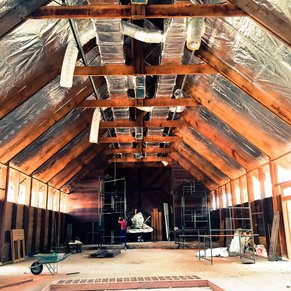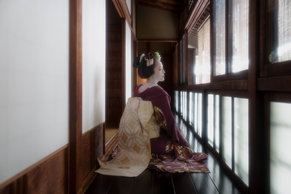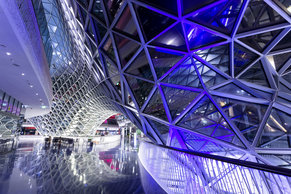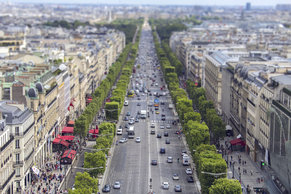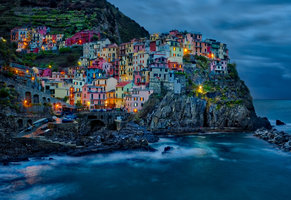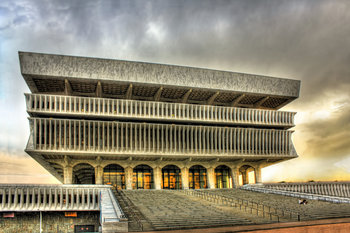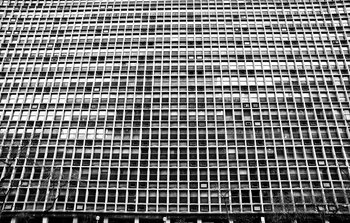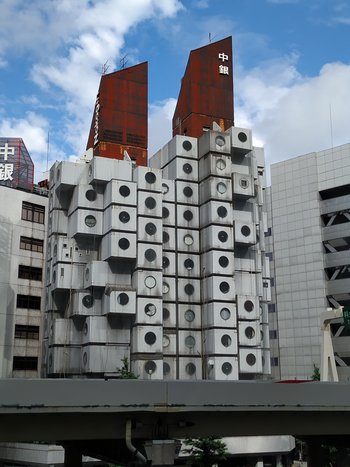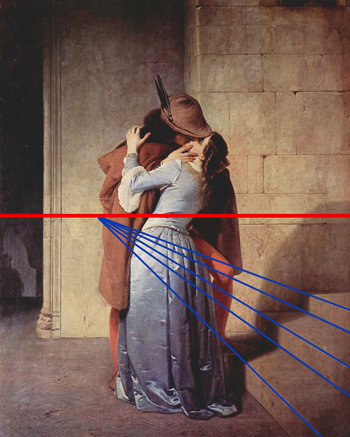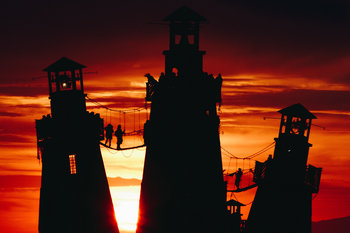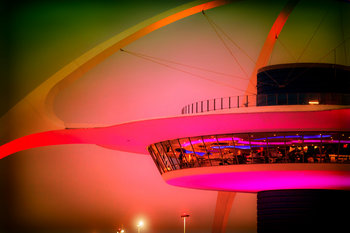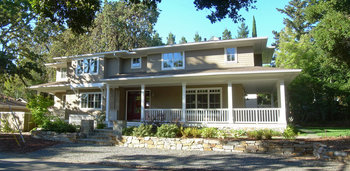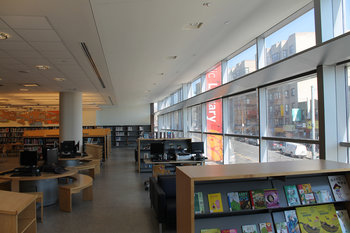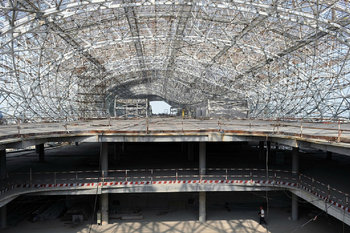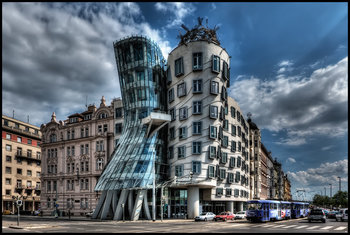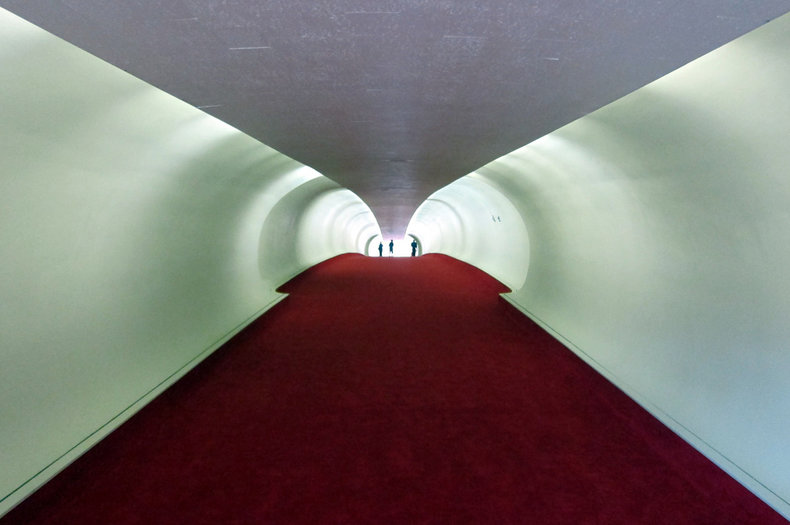
Future Embrace
Modern architecture emerged in the 1920s. At the time, various flavors of highly decorative styles of revival architecture had dominated architecture for more than a century. These schools such as Victorian, Edwardian and Neo-Gothic were loosely based on classical architecture that was several thousand years old. Modern architecture rejected all influence of history and tradition in favor of new forms based on the principles of modernism.
Industrial Materials
Modernism was based on industrial materials that made new forms of architecture possible. Arguably, the earliest example of this was The Crystal Palace in London's Hyde Park build to house the Great Exhibition of 1851. This structure was completely constructed of glass and iron such that its walls appeared to be large crystals. This would be completely unremarkable, bland and cliche to a modern observer but was unbelievable at the time.
Form Follows Function
Modernism calls for logic, rational expression and the application of universal principles. The defining principle of modern architecture is known as form follows function, the rule that architecture and design be driven purely by required functionality and not by artistic expression.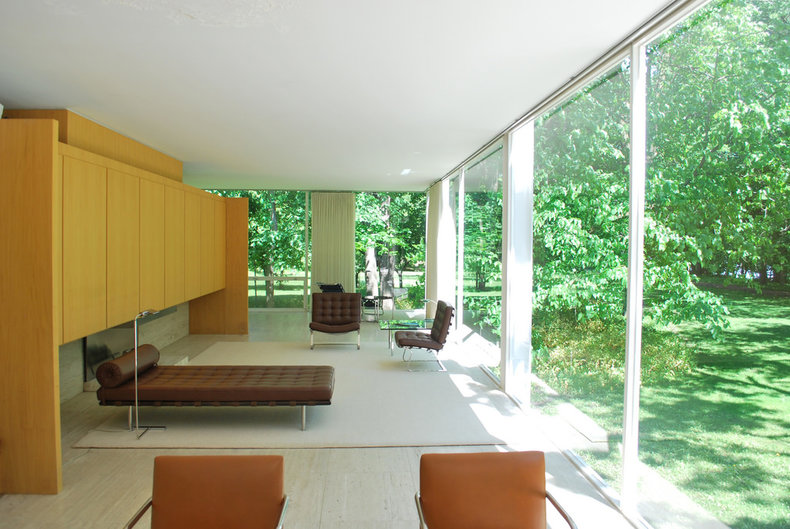
Minimalism
Modernism pursues minimalism with an ideological zeal such that removing things is always a virtue.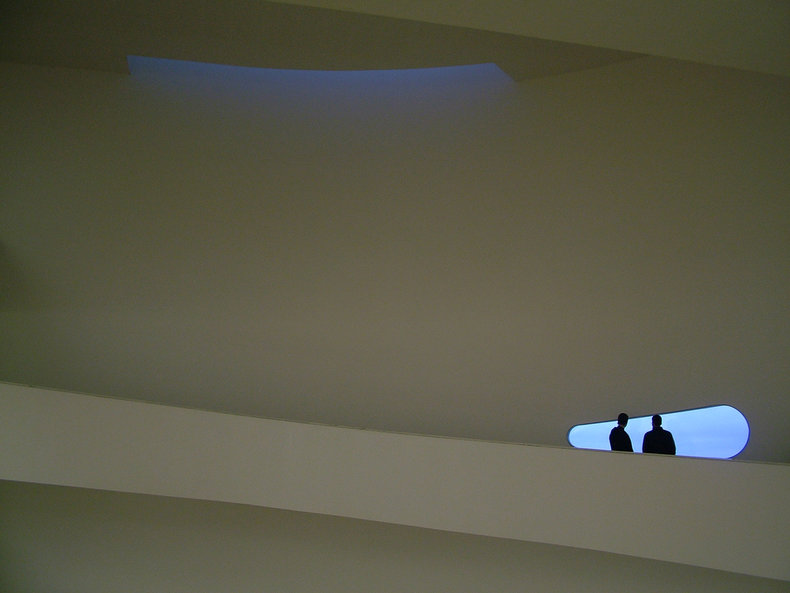
Rectilinear Forms
Form follows function has a large number of implications as everything an architect designs needs to be justified in terms of practical functionality. For example, rectangles tend to be a far more useful shape for a structure than any other shape such that almost all truly modernist architecture takes on a rectilinear form.
Rejection of Ornament
Modernist architecture rejects all decoration and ornament with the theory that this is wasteful because it causes buildings and interiors to quickly go out of style. This is also based on form follows function whereby anything that isn't directly functional is against the rules of modernist design. Early modernist designs of the 1920s and 1930s remained slightly decorative but this declined with each passing decade and modernism became increasingly rigid and formulaic.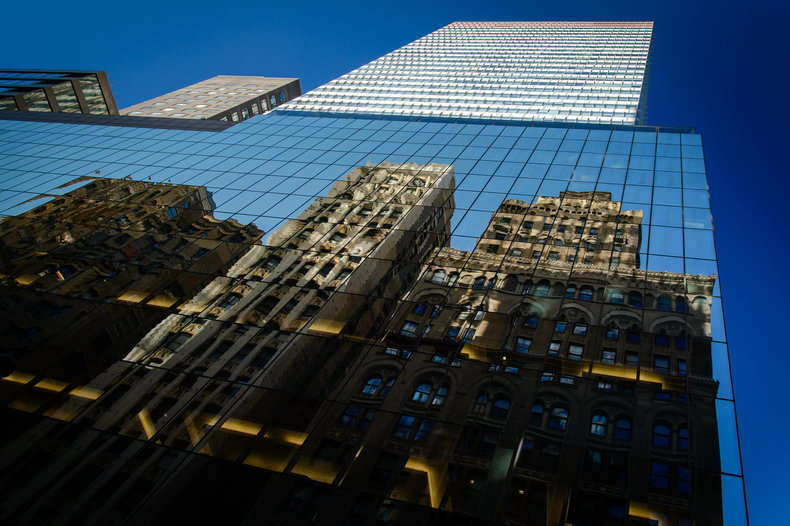
Cultureless & Natureless
Modernism embraces science, technology and the industrial order over culture and nature.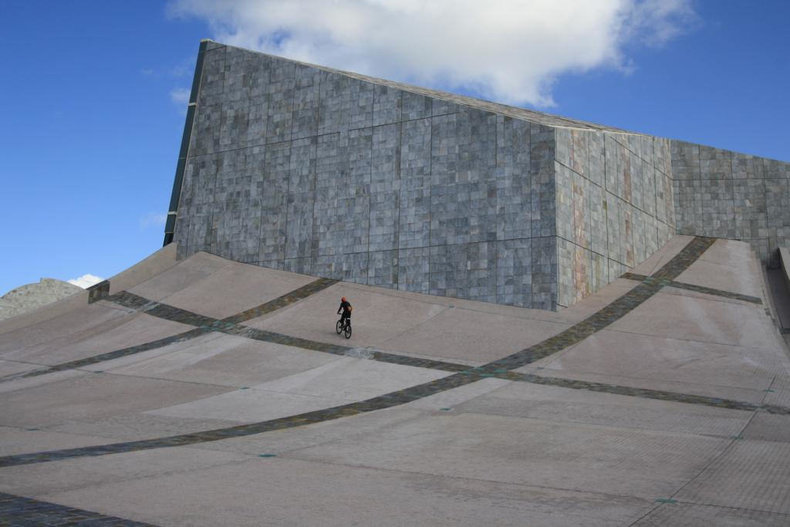
Ribbon Windows
Industrial materials such as steel and reinforced concrete allowed structural elements to be hidden within the interior of a structure allowing the exterior walls to be completely covered in glass.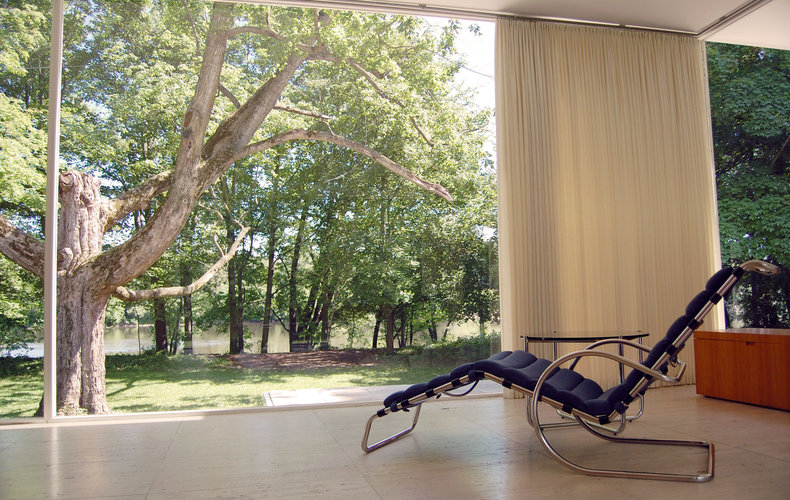
Roof Terrace
Elimination of traditional gabled roofs that have a slope in favor of flat roofs that create a usable space such as a rooftop terrace, pool or garden.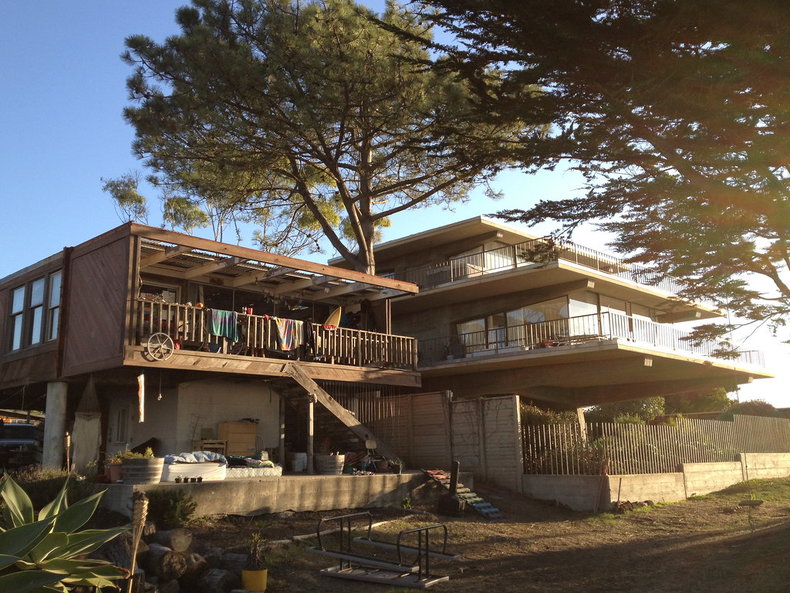
Volume Over Mass
Traditional architecture focuses on the massing of a building, meaning its primary forms. Modern architecture is more likely to focus on interior spaces created by the building as these are functional. In other words, exterior forms may be unimpressive but rooms may be remarkably useful.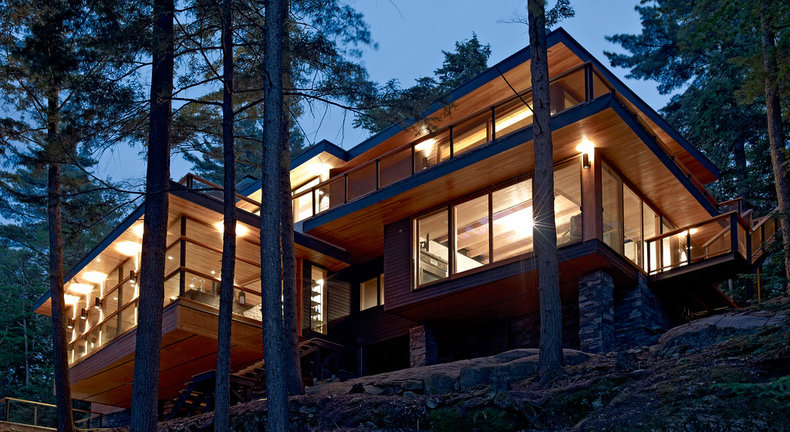
Open Concept
Steel and reinforced concrete allowed for smaller supports such that interiors could be mostly open space. As such, many modernists opted for open concept interiors with few or no interior walls.
Dematerialization
Dematerialization is the use of the least and lightest materials possible. It was also common for modernist architecture to use the cheapest and most practical materials for a structure.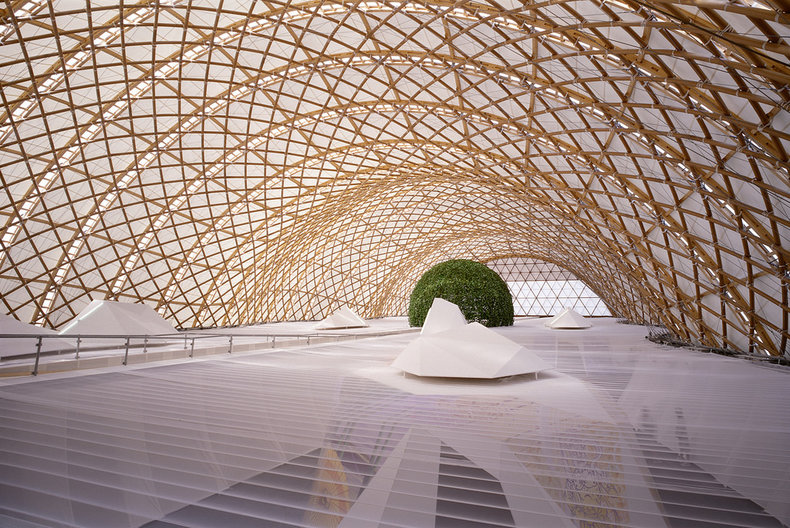
Truth to Materials
The principle that materials not hide their true nature behind decoration. Together with its use of industrial materials such as concrete, this often meant that modernist architecture looked something like a highway overpass or similar concrete infrastructure.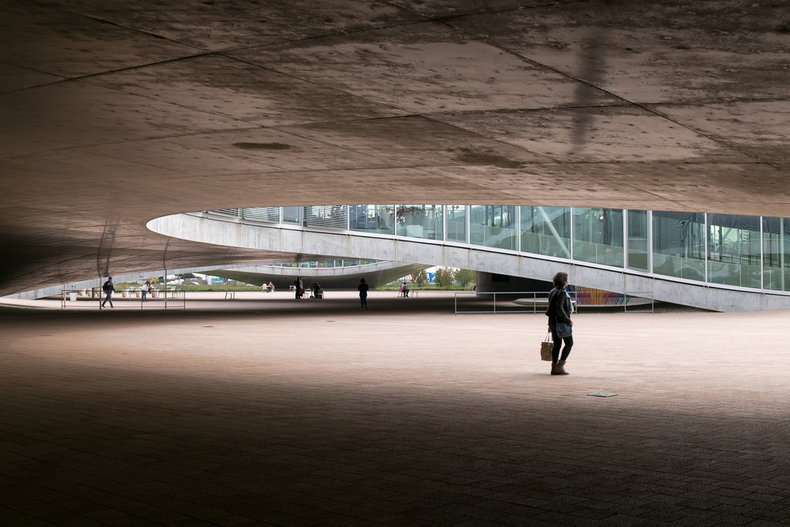
Black & White
Modernism calls for the application of technological and scientific principles over any sense of reflecting culture, tradition or nature. As such, colors are selected logically based on their reflective properties with white almost always winning for interiors because it is highly reflective and black occasionally used on exteriors to absorb glare.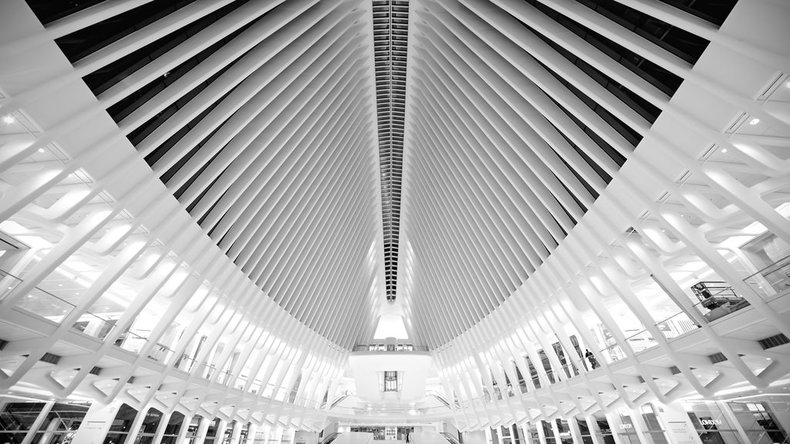
Internationalism
The pursuit of an international style that transcends borders. This ignores the local culture and nature in favor of a universal style based on science, technology and cold logic.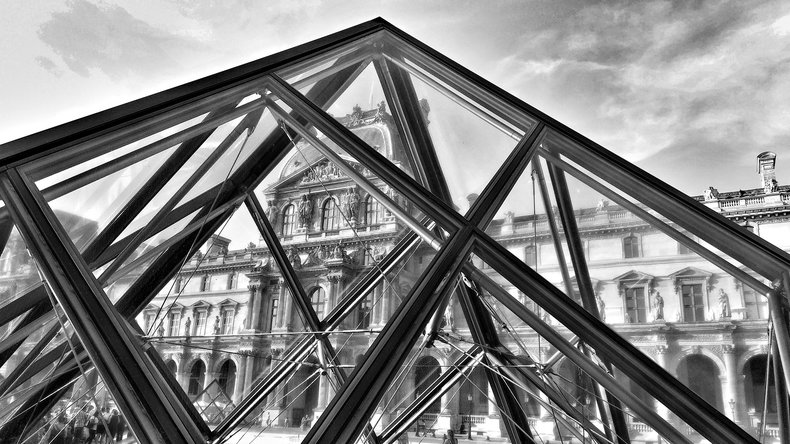
Reorder
Bold forms that stand in opposition to their surroundings such that they symbolize the dominance of modernism, science, technology, the state or the industrial order. This was embraced by schools of modernist architecture such as Brutalism with these projects often funded by nations and institutions such as universities.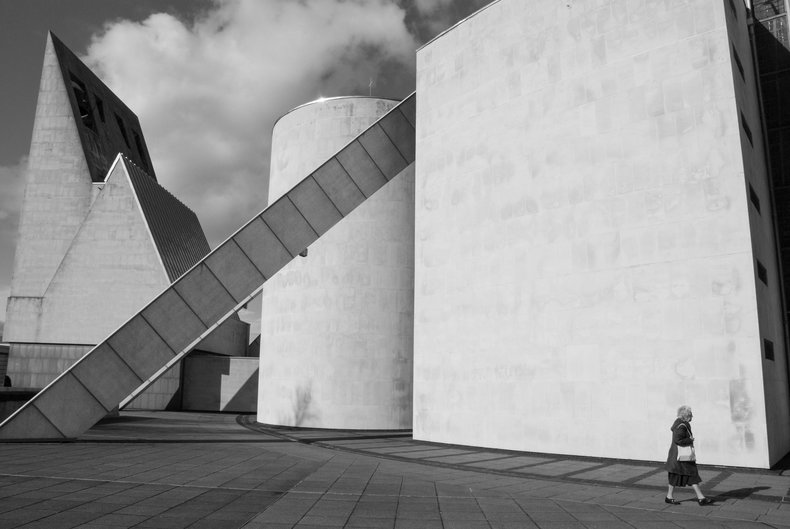
Repetition
The organization of structures into identical modules that are scaled without any variation. This peaked with a style known as high modernism that was essentially a vision of a world filled with small white rooms that are exactly the same size.
Rebels
Despite the strict embrace of rules that restricted the free expression of modernist architects, a few rebellious architects challenged modernist principles but are nevertheless considered modernists. For example, Frank Lloyd Wright, a 20th century architect with no formal training, designed 532 built structures that each challenged the norms and emerging dogma of modernism. A Frank Lloyd Wright house known as Fallingwater is viewed as the first modern instance of organic architecture that blends structures into existing natural surroundings. The house makes use of natural materials such as stone and is fully integrated into a waterfall. This stands in remarkable contrast to mainstay of modernism that sought to reorder surroundings such as local culture and environment with high-minded principles.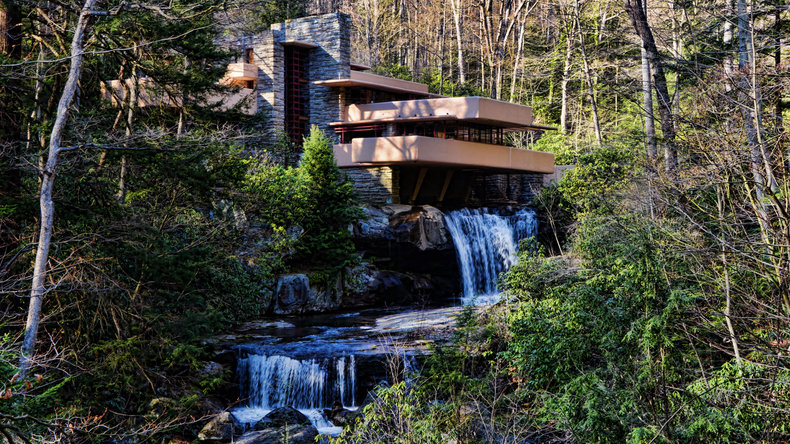
Predictability
The rigid ideological and rules-based environment of modernist architecture became unpopular with the explosion of individuality in the 1960s that brought a new wave of thinking known as postmodernism. This was a rejection of all universal rules in favor of brave expressionism, ornament and integration with the local culture and environment. Most remarkable architecture produced since 1970 is considered postmodernist.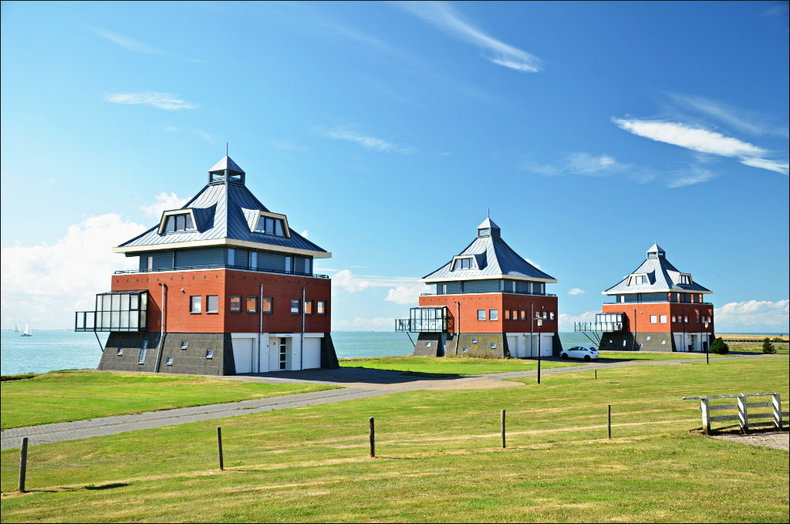
Notes
Modern architecture is extremely common and familiar as most "regular" office buildings of glass and steel are built according to modernist principles.| Overview: Modern Architecture | ||
Type | ||
Definition | An 20th century architectural movement that embraced principled design based on form follows function, cold logic, minimalism and the use of relatively new industrial materials to build structures that emphasized volume over massing. | |
Related Concepts | ||


